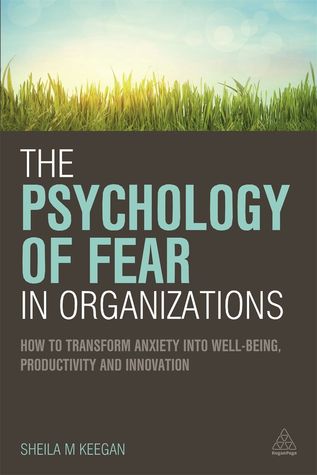The Economist news magazine recently reviewed a new book by historian Robert Peckham, Fear: An Alternative History of the World (2023) (link here; registration necessary), and I couldn’t help but relate it to some of the less wonderful aspects of work and employment. Here are some snippets of the review (with selected passages bolded):
Fear is a primal, necessary emotion. Mr Peckham calls it “a neurobiological process to keep us alive”. If our ancestors had not feared cliff-edges or sabre-toothed tigers, we might not be here today. The flipside is that, since humans are a communicative, imaginative species, fear can be conjured out of whispers. His book does not quite live up to its ambitious subtitle, but it illuminates the many ways in which fear has shaped human behaviour over the past 700 years, from which readers can draw lessons for the present.
The main one is: “Power depends on fear.”
.***
Much of this book was written during the covid-19 pandemic, so the author naturally ponders the fear of infection—and its manipulation by the powerful. When the Black Death struck Europe, rumours spread that unpopular minorities, such as “Jews, Muslims, paupers, lepers and foreigners”, might be “malevolent carriers of contagion”. Horrific persecution followed.
***
Fear of the coronavirus seeded all manner of conspiracy theories, and many governments took advantage of pandemic panic to suppress civil liberties. While living in Hong Kong, Mr Peckham observed first-hand how the Chinese Communist Party used the virus as an excuse to ban the pro-democracy protests that had rocked the place in 2019-20.
The book explores how easy it is for bold liars to fan terror. As Hermann Göring, Adolf Hitler’s air chief, summarised: “All you have to do is tell [the people] they are being attacked and denounce the pacifists for lack of patriotism and exposing the country to danger. It works the same way in any country.”
Fear at work
So, to borrow from historian Peckham, does power at work depend on fear?
Our need to earn a living and pay the bills, as well as — for some — a desire for self-expression and accomplishment, make work and employment central to many lives. Of course, it also means that threats to our job security and our ability to perform those jobs can fuel fear and apprehension. Rumors of layoffs, reorganizations, plant closings, for example, can generate deep anxieties across the workforce. Some employers will engage in such rumor-mongering in order to “motivate” workers or to discourage union organizing.
Furthermore, targeted mistreatment such as sexual harassment or workplace bullying constitute not only interpersonal abuse, but also a fundamental undermining of someone’s ability to do their job. The possibility of facing more of the same can certainly induce fear, especially if trustworthy internal avenues for addressing the abusive behaviors do not exist. Ethical organizations prohibit such mistreatment and take reports of offending behaviors seriously, but as we know, too many employers do not rise to that level of decency.
Here in the U.S., we have fairly strong laws on the books against sexual harassment, but all too often, judges do not grasp the realities of this abuse and dismiss many valid claims before they go to trial. As for workplace bullying, we continue to advocate for the enactment of the anti-bullying Healthy Workplace Bill, but for now, targets of severe bullying often have no legal recourse. In short, with sexual harassment, the law is often misapplied. With workplace bullying, needed legal protections often do not exist.
For an excellent exploration of fear at work, I reiterate my earlier recommendation of The Psychology of Fear in Organizations (2015) by Dr. Sheila M. Keegan. As I wrote in several years ago:
Dr. Keegan has done her homework for this book. Those who are attentive to high levels of fear and anxiety in many modern workplaces will find plenty of research and analysis that validates their concerns.
For those specifically interested in workplace bullying, there’s a subchapter that covers the basics, including references to work done by the Workplace Bullying Institute. The deeper value of this volume is how it places bullying and other negative behaviors in an organizational context.
Indeed, I consider the book title itself to be a triumph of messaging, expressly linking fear at work to organizations. After all, rare is the lone wolf supervisor or co-worker who makes everyone’s work life a misery, amidst an otherwise happy, functional workplace. Organizational cultures typically enable practices and behaviors that fuel fear, anxiety, and foreboding at work.
You may go here for my review of Dr. Keegan’s book. It remains a very relevant and insightful commentary on fear at work.

How many books am I going to buy based on your recommendations? I do have a library card so that may be my only recourse. Good blog, Dr. Yamada.